
Moroccan Architecture and Design: A Timeless Blend of Tradition and Elegance
Moroccan architecture and design are a mesmerizing fusion of cultural influences, shaped by Berber, Arab, Andalusian, and European styles. This distinctive architectural tradition is characterized by intricate geometric patterns, vibrant colors, ornate woodwork, and a deep respect for symmetry and balance. From the grandeur of ancient kasbahs to the intricate designs of riads and mosques, Moroccan architecture reflects the country’s rich history and artistic excellence.
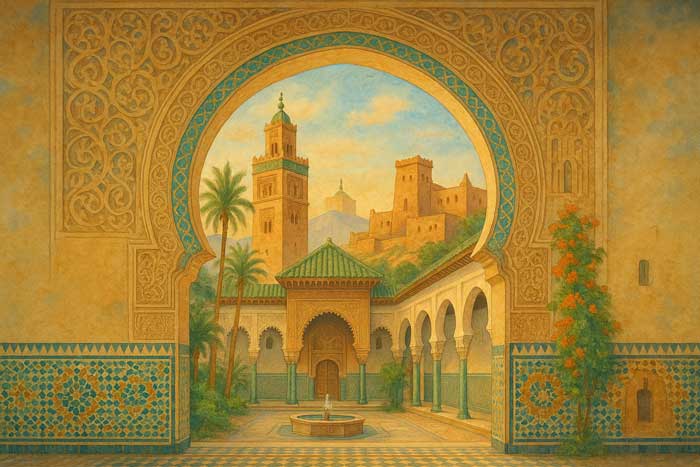
Key Elements of Moroccan Architecture and Design
Zellige: The Art of Mosaic Tilework
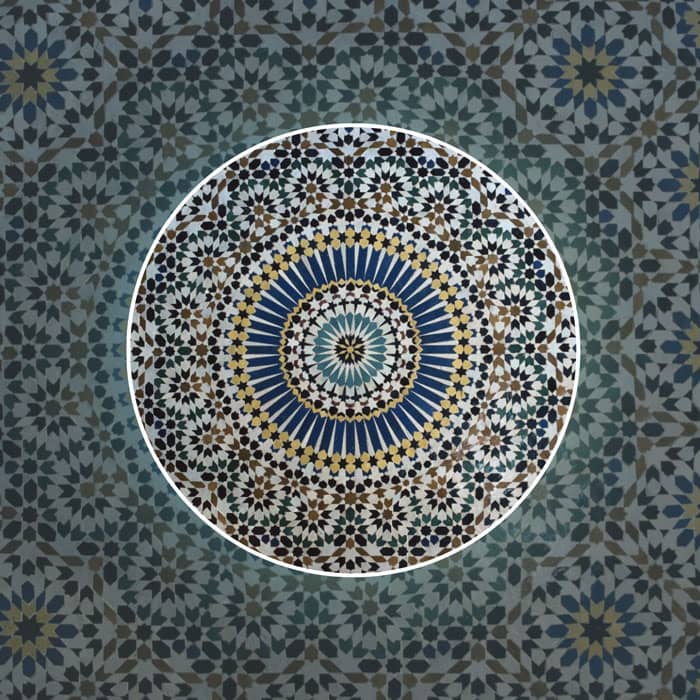
Carved Plaster (Stucco Work)
Carved plaster, or stucco work, is another quintessential element of Moroccan architecture, renowned for its intricate designs and cultural significance. Often mistaken for tadelakt, a lime-based plaster prized for its smooth, waterproof finish, carved plaster serves a different purpose, adorning the archways, ceilings, and walls of mosques, riads, and palaces with mesmerizing patterns. This craft embodies the Islamic artistic principles of symmetry and repetition, transforming ordinary surfaces into works of art that evoke a sense of elegance and spirituality. Over centuries, Moroccan artisans have mastered the delicate process of carving plaster by hand, creating designs that range from floral and arabesque motifs to complex geometric patterns. This decorative technique, found in historic landmarks like the Al-Qarawiyyin Mosque in Fez and the Bahia Palace in Marrakech, exemplifies how Moroccan architecture seamlessly merges functionality with artistic expression. Carved plaster not only enhances the visual appeal of spaces but also reflects the cultural and spiritual values embedded in Morocco’s architectural heritage.
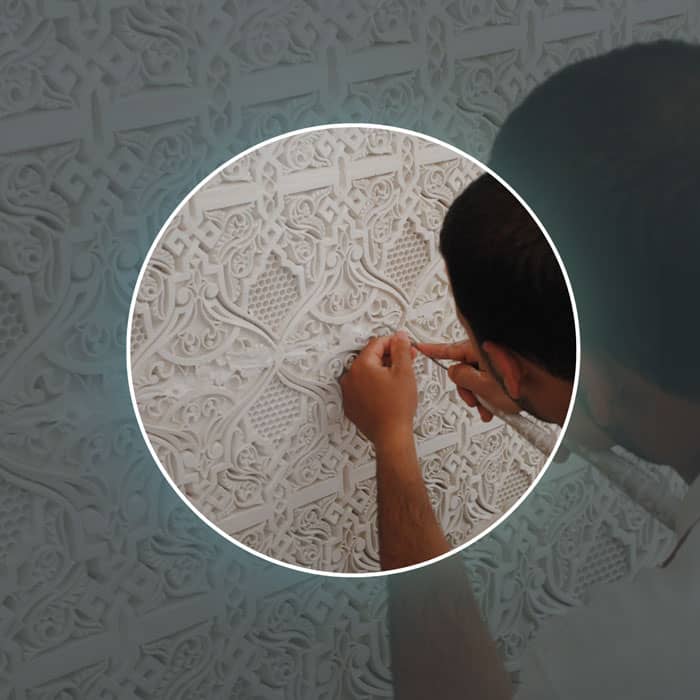
Cedarwood & Intricate Woodwork
Cedarwood and intricate woodwork are integral to Moroccan architecture, showcasing the country’s exceptional craftsmanship and attention to detail. Revered for its durability, aromatic qualities, and natural resistance to insects, cedarwood is the material of choice for crafting exquisite ceilings, doors, furniture, and structural elements. Master artisans, employing skills passed down through generations, carve delicate patterns and motifs into wooden panels, blending Islamic geometric designs with floral and arabesque elements. This intricate woodwork adorns many historical landmarks, such as the Al-Qarawiyyin Mosque in Fez, where elaborately carved cedarwood beams and panels contribute to the mosque’s timeless elegance. In palaces, riads, and madrasas, the artistry extends to latticed screens and domed ceilings, creating spaces that are both functional and visually captivating. Beyond its aesthetic appeal, cedarwood symbolizes the fusion of practicality and artistry, a defining feature of Moroccan architectural heritage.

Horseshoe Arches & Keyhole Doorways
Horseshoe arches and keyhole doorways are iconic elements of Moroccan architecture, embodying the fusion of Andalusian and Islamic influences that define the region’s design aesthetic. Horseshoe arches, with their elegantly rounded and expansive curves, are a symbol of grandeur and harmony, frequently found in mosques, palaces, and madrasas. They not only provide structural support but also serve as a visual gateway that draws the eye upward, creating a sense of openness and spirituality. Complementing these arches are keyhole-shaped doorways, distinguished by their unique silhouette and intricate detailing. Often framed with geometric and floral motifs, these doorways transform functional entrances into ornamental masterpieces, adding depth and character to both public and private spaces. Together, horseshoe arches and keyhole doorways represent the architectural ingenuity of Morocco, blending aesthetic beauty with cultural and spiritual resonance, and leaving a lasting impression of elegance and craftsmanship.
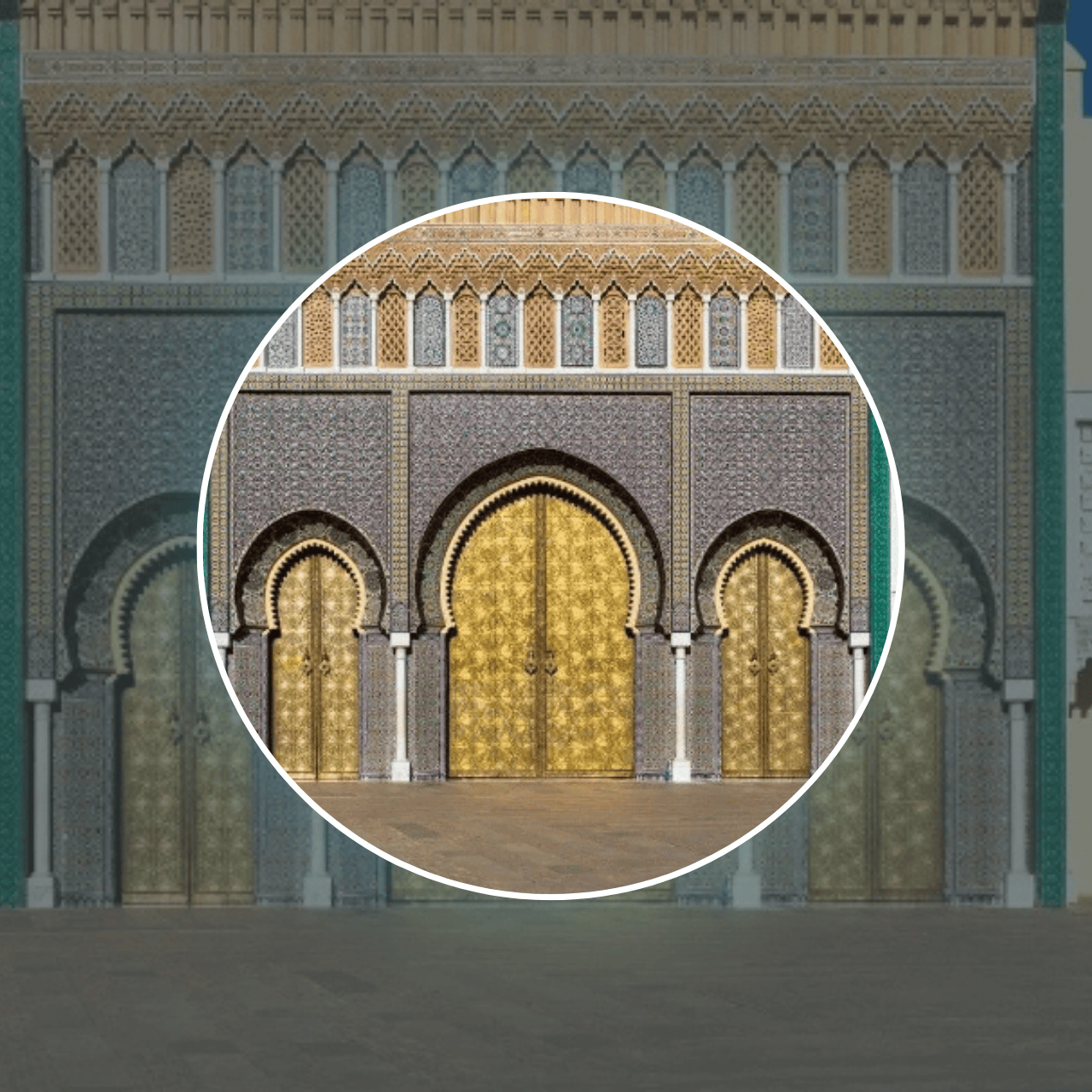
Discover the magic of Morocco through its breathtaking architecture!
From the intricate mosaics of zellige to the majestic palaces, ancient kasbahs, and grand mosques, every corner tells a story of artistry and history. Join us on an unforgettable journey to explore Morocco’s timeless beauty, immerse yourself in vibrant colors, stunning craftsmanship, and rich cultural heritage. Book your Moroccan architectural adventure today and step into a world where tradition and elegance come alive!
Iconic Moroccan Architectural Marvels
Riads: The Heart of Moroccan Homes
Riads are traditional Moroccan houses or palaces with an interior courtyard or garden. These homes are designed to offer an oasis of calm amidst the bustling medinas. They often feature intricately carved cedarwood doors, colorful zellige tiles, and detailed stucco work. The courtyard, typically adorned with a central fountain, is a fundamental aspect of riad architecture, symbolizing harmony and serenity.
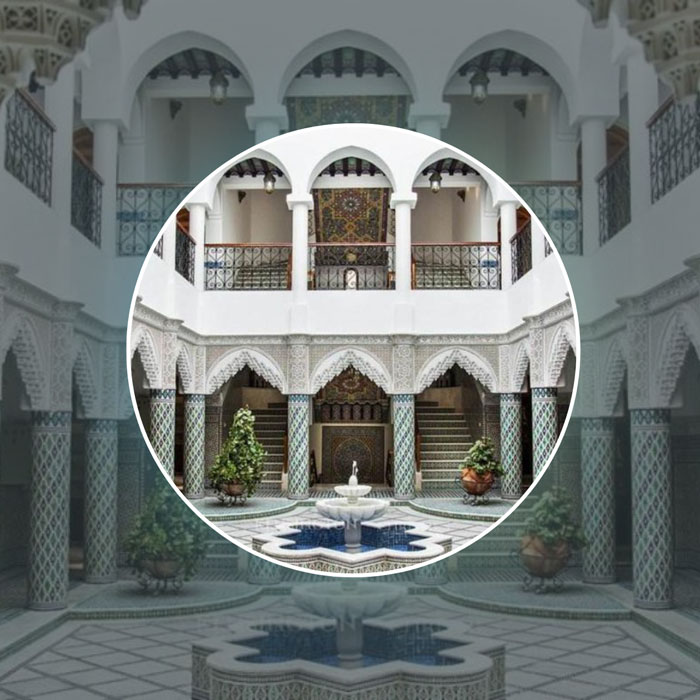
The Kasbahs of Morocco
The kasbahs of Morocco stand as enduring symbols of the country’s architectural ingenuity and historical legacy. These fortified structures, traditionally built as strongholds for rulers and defense centers for communities, are masterpieces of earthen architecture, blending functionality with aesthetic harmony. Constructed using sun-dried mud bricks, kasbahs were designed to withstand harsh desert conditions while blending seamlessly with their natural surroundings. Among the most iconic is Ait Ben Haddou, a UNESCO World Heritage site renowned for its labyrinthine alleys, towering walls, and commanding presence in the arid landscape. This ancient ksar (fortified village) exemplifies the communal and defensive purpose of kasbahs, often featuring granaries, watchtowers, and living quarters within their fortified walls. Beyond their practical use, kasbahs are a testament to Morocco’s ability to harmonize architecture with the environment, reflecting a deep connection to the land and a resilient spirit that has stood the test of time.
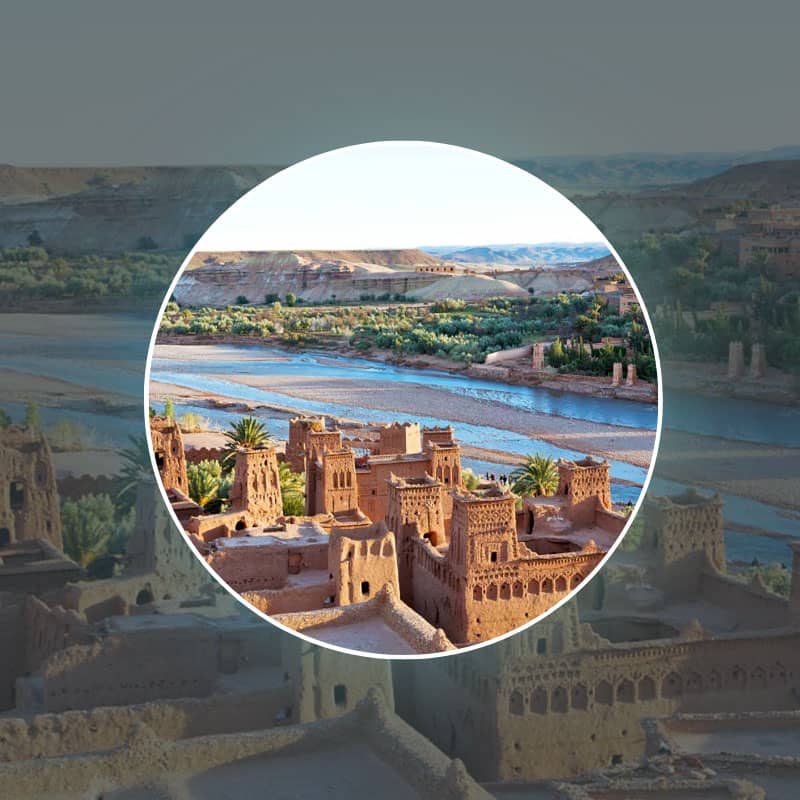
The Grand Mosques of Morocco
The grand mosques of Morocco are monumental symbols of the country’s rich architectural heritage and its deep connection to Islamic art and culture. These sacred spaces are not only places of worship but also architectural masterpieces that embody the elegance and sophistication of Moroccan design. The Hassan II Mosque in Casablanca, one of the largest mosques in the world, is a testament to modern craftsmanship and traditional artistry. Its towering minaret, the tallest in the world, and intricate zellige tilework are complemented by its breathtaking oceanfront location, blending spirituality with natural beauty. Similarly, the Koutoubia Mosque in Marrakech, an iconic structure with its striking minaret, showcases the influence of Moroccan architecture far beyond its borders, serving as the model for the Giralda in Seville, Spain. These mosques, along with others like the Al-Qarawiyyin Mosque in Fez, exemplify the seamless integration of art, function, and faith, highlighting Morocco’s enduring legacy as a center of architectural and cultural excellence.
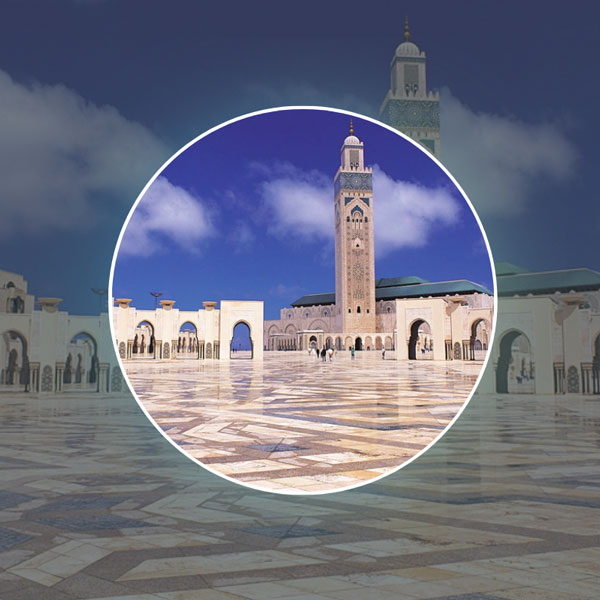
The Magnificent Palaces
The magnificent palaces of Morocco are unparalleled embodiments of the country’s opulence, artistry, and historical grandeur. These architectural marvels reflect a rich legacy of Moroccan craftsmanship and design, with each structure narrating a story of royal splendor and cultural sophistication. The Bahia Palace in Marrakech, renowned for its intricately carved floral motifs, expansive courtyards, and exquisitely painted wooden ceilings, exemplifies the delicate balance between beauty and functionality. Every detail, from the zellige mosaics to the arabesque stucco, showcases the skill and creativity of Moroccan artisans. Similarly, the Royal Palace of Fes, with its iconic golden doors and masterful zellige tilework, stands as a symbol of regal authority and architectural finesse. These palaces not only highlight the luxurious lifestyles of Morocco’s rulers but also serve as cultural treasures, preserving the artistic traditions that continue to inspire and captivate visitors from around the world.
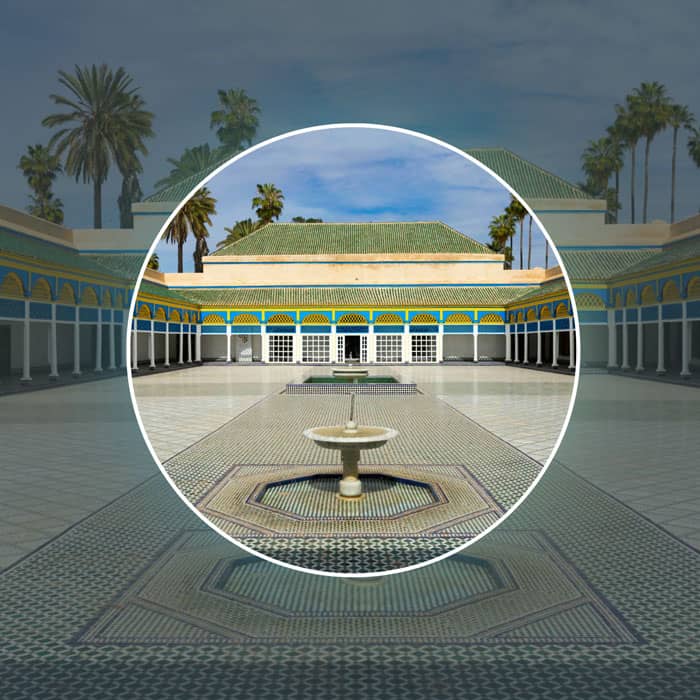
Discover the magic of Morocco through its breathtaking architecture!
From the intricate mosaics of zellige to the majestic palaces, ancient kasbahs, and grand mosques, every corner tells a story of artistry and history. Join us on an unforgettable journey to explore Morocco’s timeless beauty, immerse yourself in vibrant colors, stunning craftsmanship, and rich cultural heritage. Book your Moroccan architectural adventure today and step into a world where tradition and elegance come alive!
The Influence of Andalusian and Islamic Architecture
Moroccan architecture has been significantly shaped by Andalusian influences, particularly after the Moors were expelled from Spain in the 15th century. Many of the design elements, such as decorative arches, geometric patterns, and elaborate tilework, can be traced back to Andalusian roots. Islamic architectural principles, which emphasize symmetry, repetition, and harmony, also play a crucial role in Moroccan design.
The Modern Revival of Moroccan Architecture
Today, Moroccan architecture continues to inspire contemporary design worldwide. Many luxury hotels, resorts, and private homes incorporate traditional Moroccan elements, blending them with modern aesthetics. The use of tadelakt walls, handcrafted zellige tiles, and ornate wooden doors has become popular in interior design trends, bringing a touch of Moroccan elegance to spaces beyond North Africa.
Conclusion
Moroccan architecture and design represent a harmonious blend of cultural influences, meticulous craftsmanship, and a deep connection to nature and spirituality. Whether through the grandiose kasbahs, intricately decorated mosques, or charming riads, Morocco’s architectural heritage continues to captivate and inspire. Exploring these architectural wonders offers a deeper appreciation of Morocco’s artistic legacy and its enduring influence on global design.
